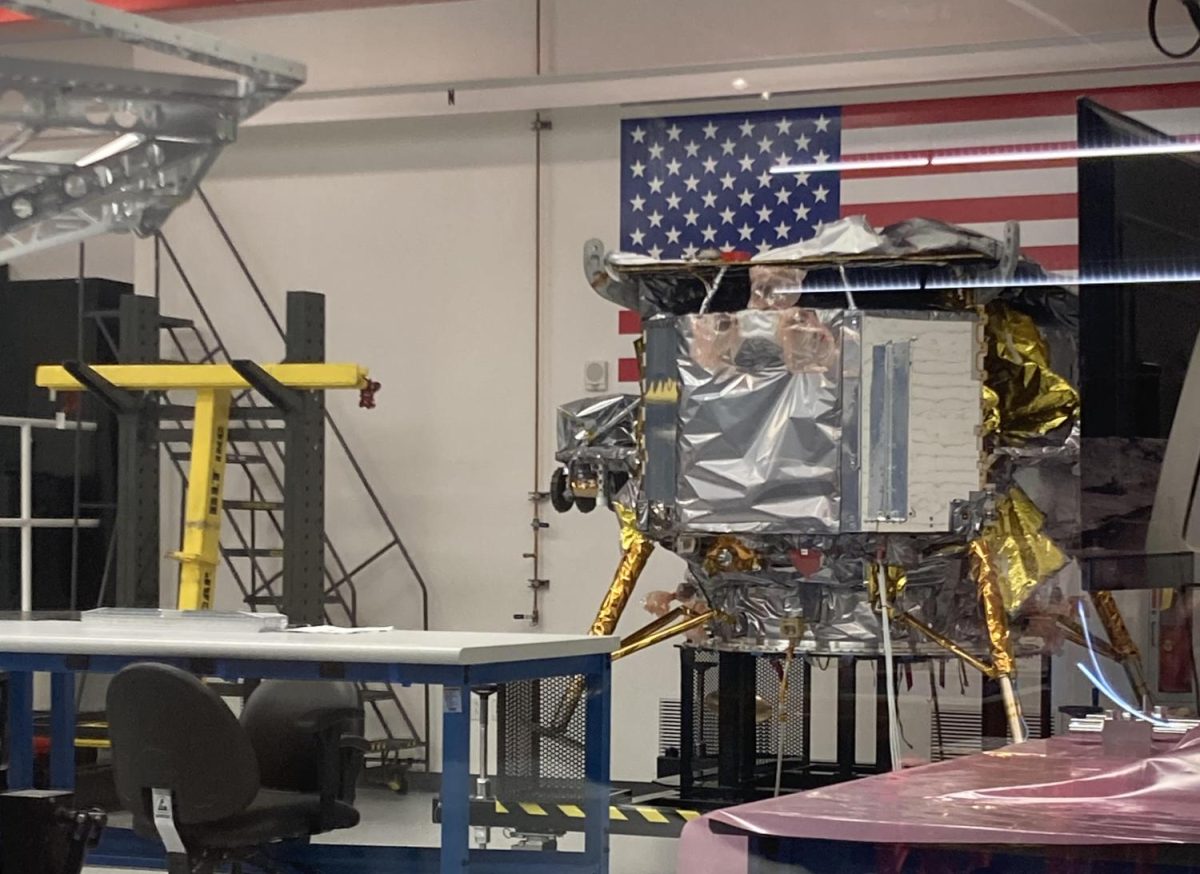Long trapped within its legacy as the city of steel, Pittsburgh is beginning to emerge as a pioneer of another field–space discovery. Originally scheduled for Christmas Eve, the Pittsburgh-created Astrobotic’s Peregrine lunar lander will be launched towards its moon-surface goal on January 8, 2024. Mounted on its side is the miniature lunar rover IRIS, brought to life entirely by Carnegie Mellon University students. Both will be launched from Cape Canaveral Space Force Station aboard the United Launch Alliance’s Vulcan Center rocket. The landing target is a site near the Gruithuisen Domes, a so-called lunar mystery.
Astrobotic’s Peregrine, a commercial lunar lander, accommodates 90 kgs of payload space and the technology to monitor the moon’s surface below and the void above. Payload prices ranged between 300,000 to 1.2 million dollars per kilogram. Among the craft’s most peculiar payloads are human ashes–technically making the lander a functional mausoleum–and a soda can, for a brand promotion.
The full construction of the Peregrine was recently showcased in Pittsburgh’s Moonshot Museum, where curious visitors were able to observe the active building of the lander through a thick sheet of glass. Museum attendants had the opportunity to write wishes on small slips of paper to be carried skywards. Now, the unique museum houses the Griffin, Astrobotic’s second craft.
IRIS, the Peregrine’s tiny companion, is a small but mighty lunar rover created through the long efforts of hundreds of CMU students. Weighing in at only two kilograms, the shoebox-sized IRIS will set records as the smallest rover to ever touch the surface of the moon. Its lightness is due to its construction of carbon fiber, which was favored for being an extremely lightweight material.
Size is not the only record IRIS is setting. The miniscule rover will also be America’s first robotic rover on the moon. No rovers have been sent to the moon by the United States since the Apollo missions, and all five sent previously were directly maneuvered by humans. Mobility data gathered from this revolutionary lightweight rover will set standards for the country’s future rover development and design process.
Equipped with a camera on both ends of its symmetrical design, IRIS will take and send a photo of the moon’s surface each time it stops its incremental movement, about every 30 centimeters or so. Data gathered through these images will help humanity gain a better understanding of the moon’s geological composition from a close-up view. In IRIS’s 50 hour operation time, it is not expected to reach distances beyond a couple hundred meters of its landing site, but any new images will make the rover’s mission a success.
Peregrine’s landing site is located near the Gruithuisen Domes, a moon landscape that has puzzled NASA scientists for years. The shape of the domes suggests they were created by a slow moving, silica-rich magma flow, in contrast to the basaltic lava flows of their surroundings. Earth’s silicic volcanoes are formed from tectonic plate movements and the influence of water, two elements currently believed to be absent in the composition of the moon. Further research on the area by the small crafts aboard the ULA’s Vulcan may bring light to the mysterious landscape’s origin.



